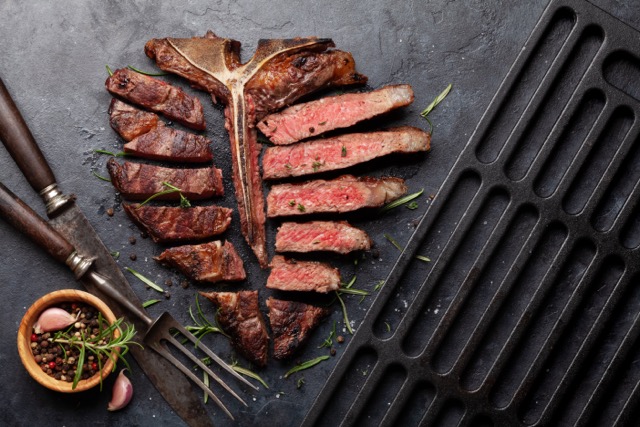Chicago Steak Company Knife Skills Guide
===
Knife skills are essential for any steak enthusiast, especially when preparing high-quality cuts from the Chicago Steak Company. Understanding the right tools and techniques can elevate your cooking experience and ensure that each meal is a culinary delight. This guide aims to provide you with essential information on knife types, techniques, safety tips, and maintenance to optimize your steak preparation process. Whether you’re a seasoned chef or a home cook, mastering these skills will enhance your steak cooking routine.
Essential Knife Types for Preparing Chicago Steak Cuts
When it comes to preparing steak, having the right knives can make all the difference. A chef’s knife, typically around 8 inches long, is versatile and perfect for various cutting tasks, from slicing vegetables to trimming fat from your steak cuts. The weight and balance of a quality chef’s knife allow for precision and control, making it an essential tool in your kitchen.
Another crucial knife is the boning knife, which has a thin, flexible blade designed for removing bones from cuts of meat. This knife is particularly useful for steaks with bones, such as ribeye or T-bone, allowing you to cleanly separate the meat from the bone without wasting any. Its design enables intricate cuts and can also be handy for filleting fish or trimming fat.
Lastly, a carving knife is indispensable when it comes to slicing cooked steaks for serving. Typically longer and thinner than a chef’s knife, it permits smooth, even cuts, ensuring that each slice maintains its juiciness and tenderness. Having these three essential knives will equip you to handle various steak cuts from the Chicago Steak Company with skill and confidence.
Mastering the Art of Knife Techniques for Steak Preparation
Once you have your knives, mastering the techniques is crucial for optimal steak preparation. The first technique to focus on is the proper grip. Holding the knife correctly—pinching the blade with your thumb and index finger while curling your other fingers around the handle—will give you better control and stability as you cut. This grip allows for a more efficient transfer of force and improved accuracy.
Another important technique is the slicing method. When cutting steak, it’s best to slice against the grain of the meat. This technique shortens the muscle fibers, making the steak more tender and easier to chew. Identifying the direction of the grain can sometimes be challenging, but with practice, you’ll develop an eye for it, and your steaks will benefit from this crucial skill.
Additionally, practice your chopping and dicing techniques with vegetables that pair well with steaks, such as onions and bell peppers. The skills you develop while preparing these accompaniments will enhance your overall knife skills and ensure that your entire meal is coordinated in terms of texture and presentation.
Safety Tips for Using Knives in Your Steak Cooking Routine
Knife safety is paramount in any kitchen, particularly when dealing with sharp tools. One of the most important safety tips is to always cut on a stable surface. Using a cutting board that doesn’t slide around will help prevent accidents. If your cutting board is slippery, consider placing a damp towel underneath it to anchor it in place.
Another safety measure is to keep your knives sharp. Dull knives can slip off the food, requiring more force and increasing the risk of injury. Regularly honing your knives will help maintain their sharpness. If you notice any nicks or significant dullness, it may be time for professional sharpening. Always handle your knives with care, and avoid distractions while cutting to minimize the risk of accidents.
Lastly, always store your knives safely. Using a knife block, magnetic strip, or blade guards helps keep your knives secure and protects the blades. Avoid leaving knives loose in a drawer where they can cause injury when reaching for other utensils. By following these safety tips, you can ensure a safe and efficient cooking environment while preparing your steaks.
Maintaining and Sharpening Your Knives for Optimal Use
Proper maintenance of your knives is essential for their longevity and performance. After each use, wash your knives by hand with warm, soapy water and dry them immediately. Avoid placing them in the dishwasher, as the high heat and harsh detergents can damage the blades and handles. Keeping your knives clean not only enhances their lifespan but also prevents cross-contamination in your kitchen.
Sharpening your knives is another critical aspect of maintenance. Investing in a quality sharpening stone or a honing rod allows you to keep your knives in peak condition. Regular honing, ideally before each use, realigns the blade edge to maintain sharpness. For more extensive sharpening needs, consider professional services or a guided sharpening system to help achieve the perfect edge.
Lastly, store your knives properly to prevent damage. A well-designed knife block or magnetic strip not only keeps your knives organized but also protects the blades from nicks and dulling. By committing to regular maintenance and proper storage, you’ll ensure that your Chicago Steak Company knives remain a reliable asset in your kitchen for years to come.
===
Mastering knife skills is an essential part of preparing delectable steaks, and the Chicago Steak Company provides some of the finest cuts available. By understanding the essential knife types, mastering techniques, adhering to safety measures, and maintaining your tools, you can significantly enhance your steak cooking experience. Whether you’re slicing through a tender filet mignon or carving a juicy ribeye, these skills will help you achieve restaurant-quality results in the comfort of your own home. Embrace the art of knife skills, and elevate your steak preparation to new heights.
